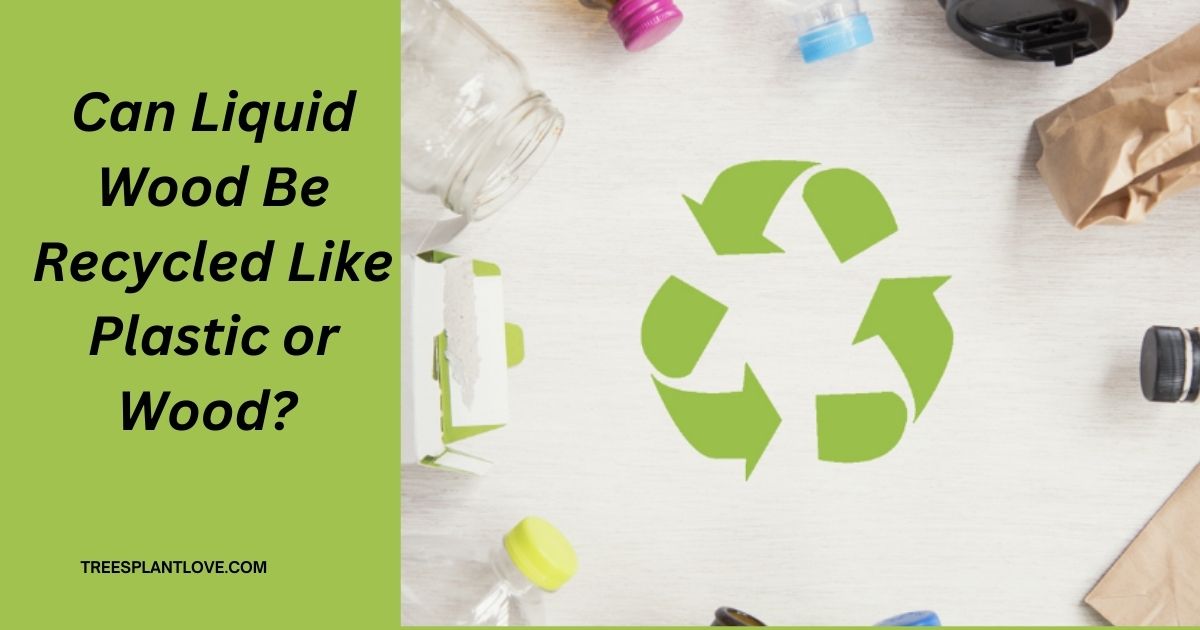
Can Liquid Wood Be Recycled Like Plastic or Wood? Sustainable Material Insights
Can Liquid Wood Be Recycled Like Plastic or Wood?: In a world where sustainability is more critical than ever, innovative materials are constantly being developed to reduce our reliance on traditional, environmentally harmful products. One such innovation that has gained significant attention in recent years is liquid wood.
A material made from a combination of natural polymers derived from wood, liquid wood promises to offer an eco-friendly alternative to plastics and other synthetic materials. But with all the buzz around liquid wood’s environmental potential, one important question remains: Can liquid wood be recycled like plastic or wood?
To answer this question, let’s explore the composition, benefits, and challenges surrounding the recycling of liquid wood.
What Is Liquid Wood?
Liquid wood, also known as Arboform, is a sustainable material made primarily from lignin, a complex organic polymer found in the cell walls of plants and trees. Unlike traditional plastics, which are derived from petroleum-based products, liquid wood offers a more eco-friendly alternative due to its natural origin. It is created through a process that transforms lignin into a resin-like substance that can be molded and shaped into a variety of products, from car parts to furniture to packaging.
The material is biodegradable, making it a promising contender in the battle against plastic pollution. Additionally, liquid wood is known for being lightweight yet strong, and it can be produced without the need for fossil fuels, offering a reduced carbon footprint compared to plastic alternatives.
Recycling Liquid Wood: Is It Possible?
Recycling Liquid Wood Like Traditional Wood
Wood recycling typically involves shredding, reprocessing, and reusing wood fibers to create new products, often through processes like pulping or re-manufacturing. Because liquid wood is derived from lignin, a natural polymer found in wood, one might assume that it could be recycled in a similar fashion. However, the process of recycling liquid wood differs due to its unique chemical structure.
In its liquid form, the material can be remolded into new shapes by applying heat and pressure. Once it has set into a product, the recycling process can involve breaking it down into smaller components and repurposing it in new applications. However, this type of recycling is not as simple as traditional wood recycling. The complexity lies in the fact that liquid wood is often treated with other substances, such as resins, to make it more durable and versatile for use in different industries. These additional components can complicate the recycling process, as they may require specific treatments to separate and reuse the material effectively.
Recycling Liquid Wood Like Plastic
When compared to plastics, the recycling of liquid wood shares some similarities but also presents significant challenges. Plastics are commonly recycled by melting them down and reshaping them into new products. Liquid wood, however, is a composite material, and the addition of various substances to improve its strength and properties could make it more difficult to recycle in the same way as plastic.
The chemical processes involved in recycling liquid wood are still under development. Researchers are investigating ways to break down and reprocess the lignin-based material in a manner similar to how plastics are recycled—by dissolving and regenerating it into usable products. However, these methods are not as advanced or widespread as those used for plastic recycling, which means that liquid wood may not yet be as easily recycled in the conventional plastic recycling streams.
Biodegradability and Eco-Friendly Disposal
One of the most significant advantages of liquid wood is its biodegradability. Unlike plastic, which can take hundreds of years to decompose in a landfill, liquid wood is broken down by natural processes much more quickly. If not recycled, liquid wood products can safely degrade in the environment, reducing their overall environmental impact.
However, this biodegradability does not negate the importance of developing effective recycling methods for liquid wood. While it can be disposed of safely, the goal should still be to recycle or repurpose the material as much as possible to reduce waste and conserve resources.
The Future of Liquid Wood Recycling
While recycling liquid wood like plastic or wood is not yet as established or streamlined, there is significant potential for growth in this area. Researchers and companies working with liquid wood are actively investigating ways to make recycling more efficient and scalable.
One promising development is the use of advanced processing technologies, such as chemical recycling and biological degradation, to break down and reconstitute liquid wood into reusable materials. By improving the recycling infrastructure and making liquid wood products easier to disassemble and reprocess, we could see the material become a more mainstream option for sustainable products.
Additionally, as liquid wood continues to gain popularity in the manufacturing sector, consumer demand for better recycling options is likely to push companies to develop more effective recycling methods.
Conclusion
So, can liquid wood be recycled like plastic or wood? The short answer is that it’s possible, but not yet as straightforward as recycling traditional wood or plastic. The technology and methods for recycling liquid wood are still in their early stages, and challenges remain in making the process more efficient.
However, with its natural origins, biodegradability, and potential for repurposing, liquid wood presents a promising alternative to plastics, and with continued research, we may see more sustainable and effective recycling processes emerge in the future.
Ultimately, the key to maximizing the environmental benefits of liquid wood lies in refining its recycling capabilities and ensuring that it becomes a key player in the circular economy of tomorrow.

Leave a Reply